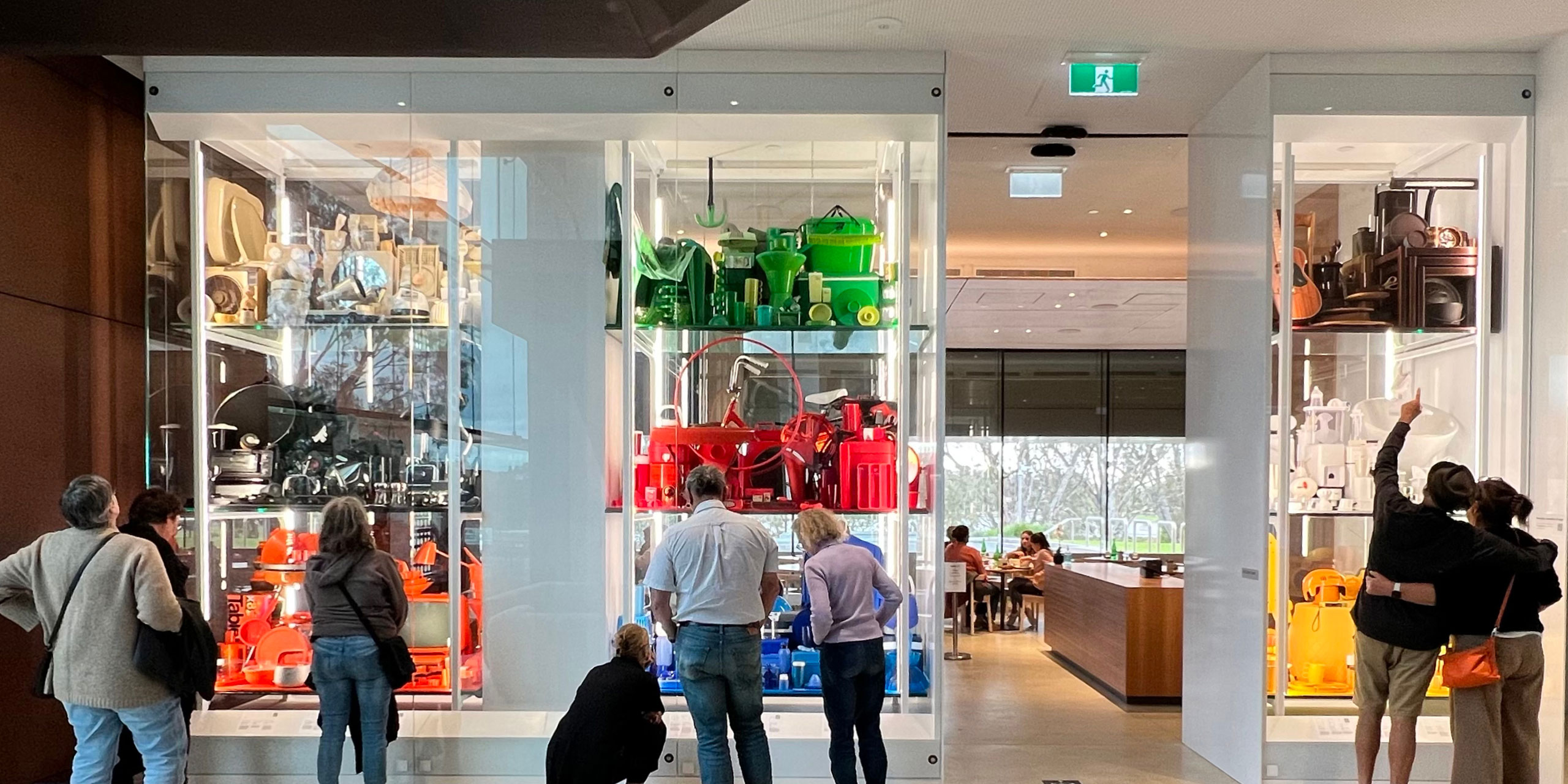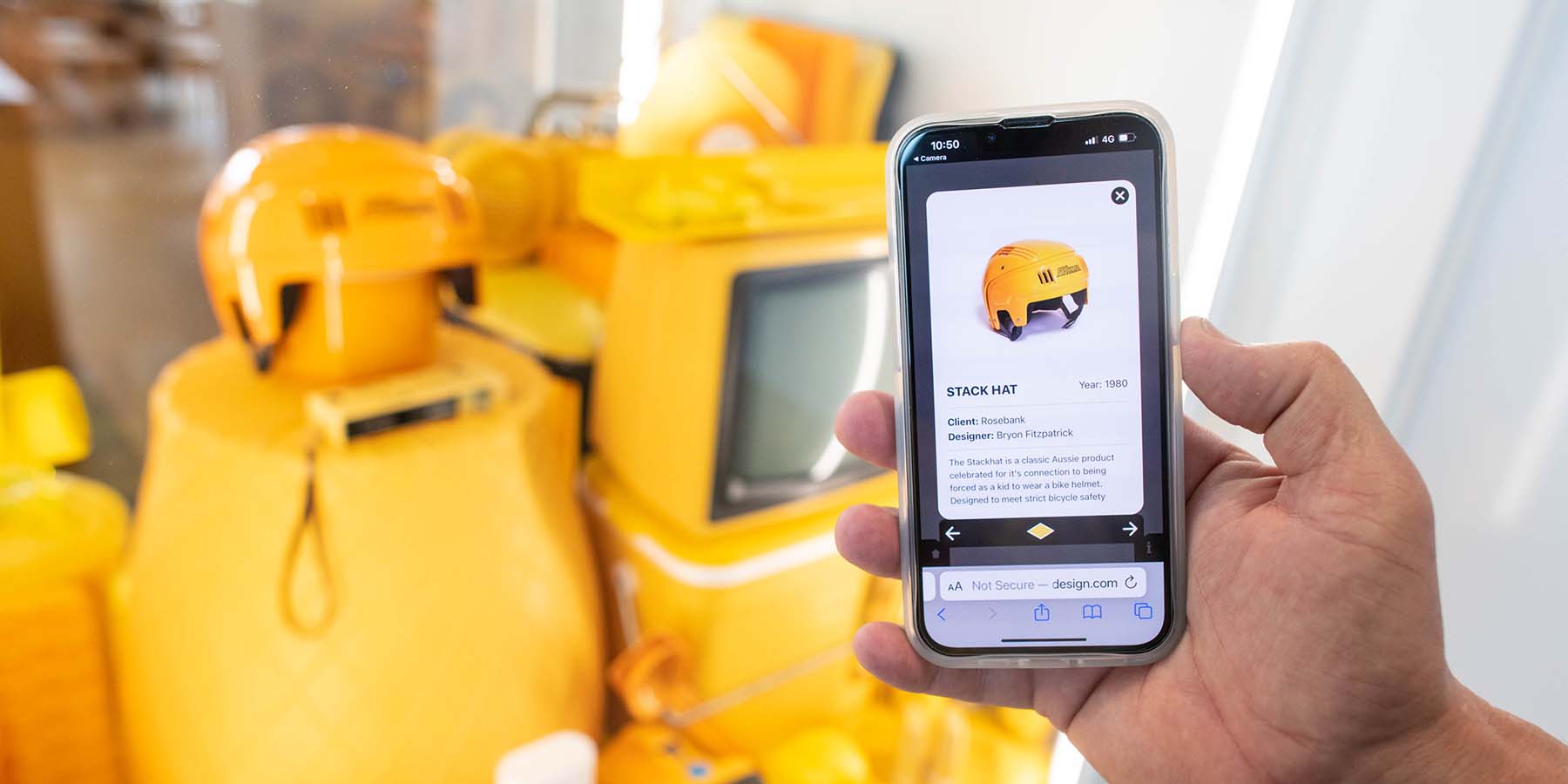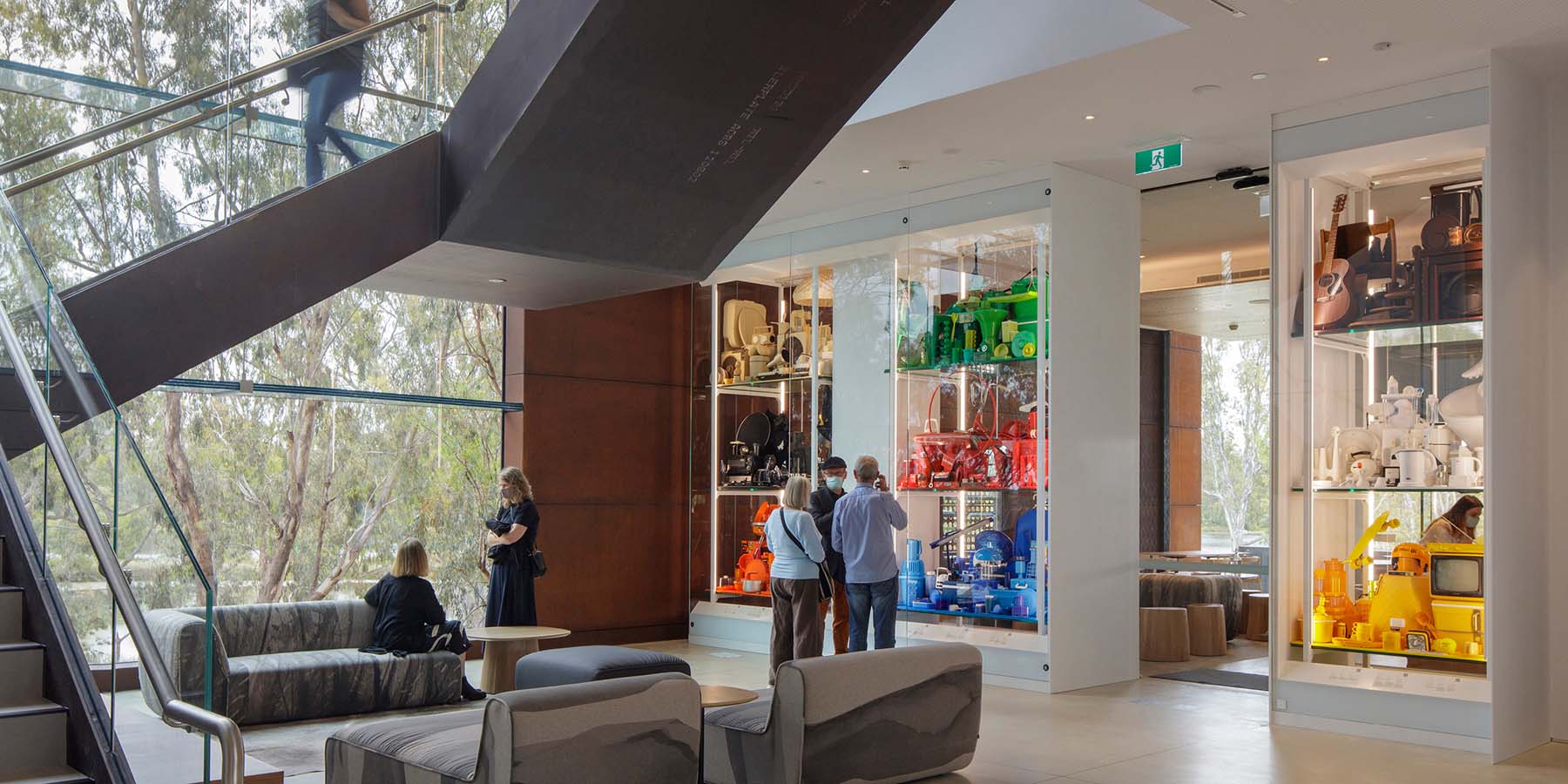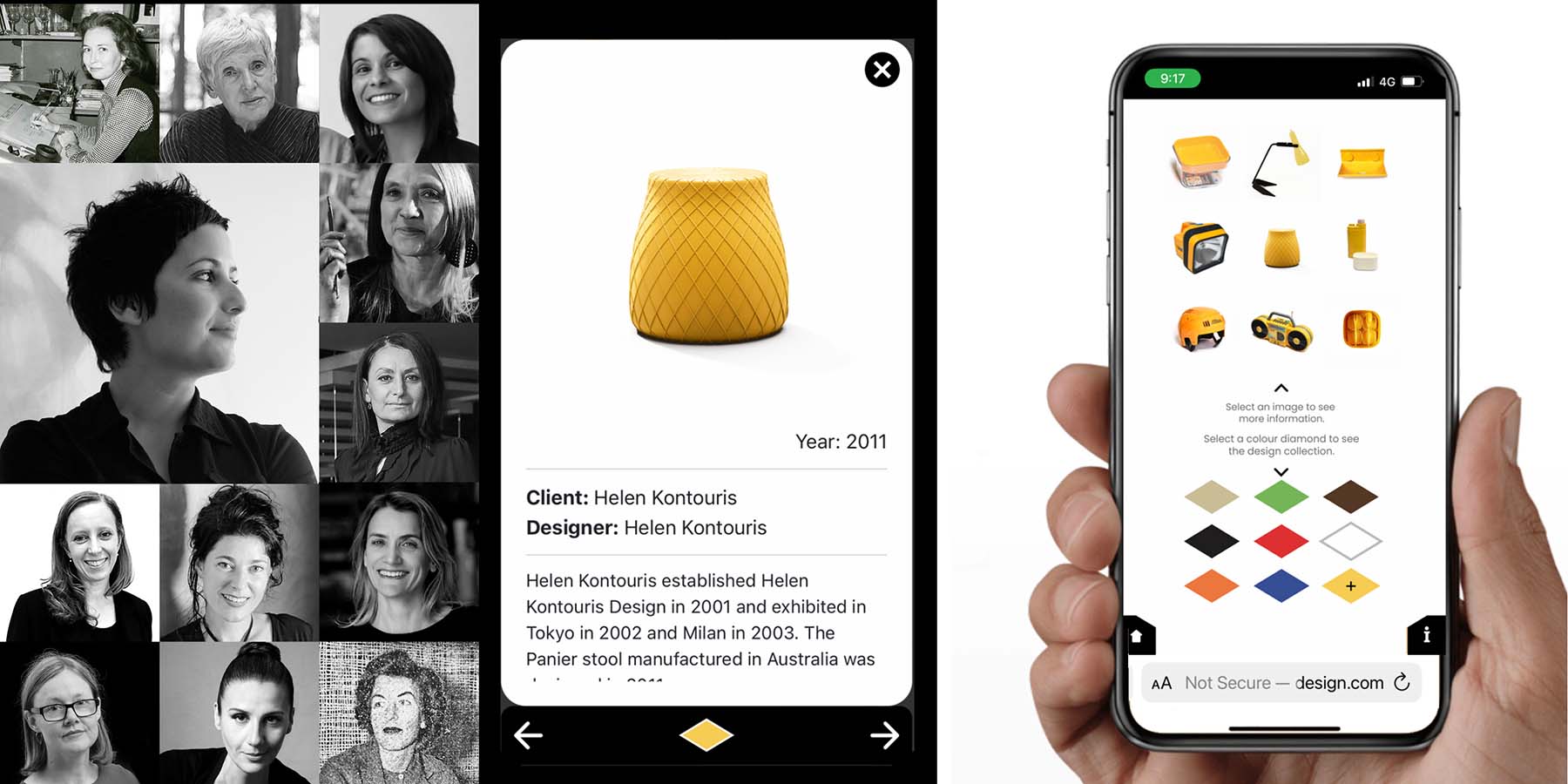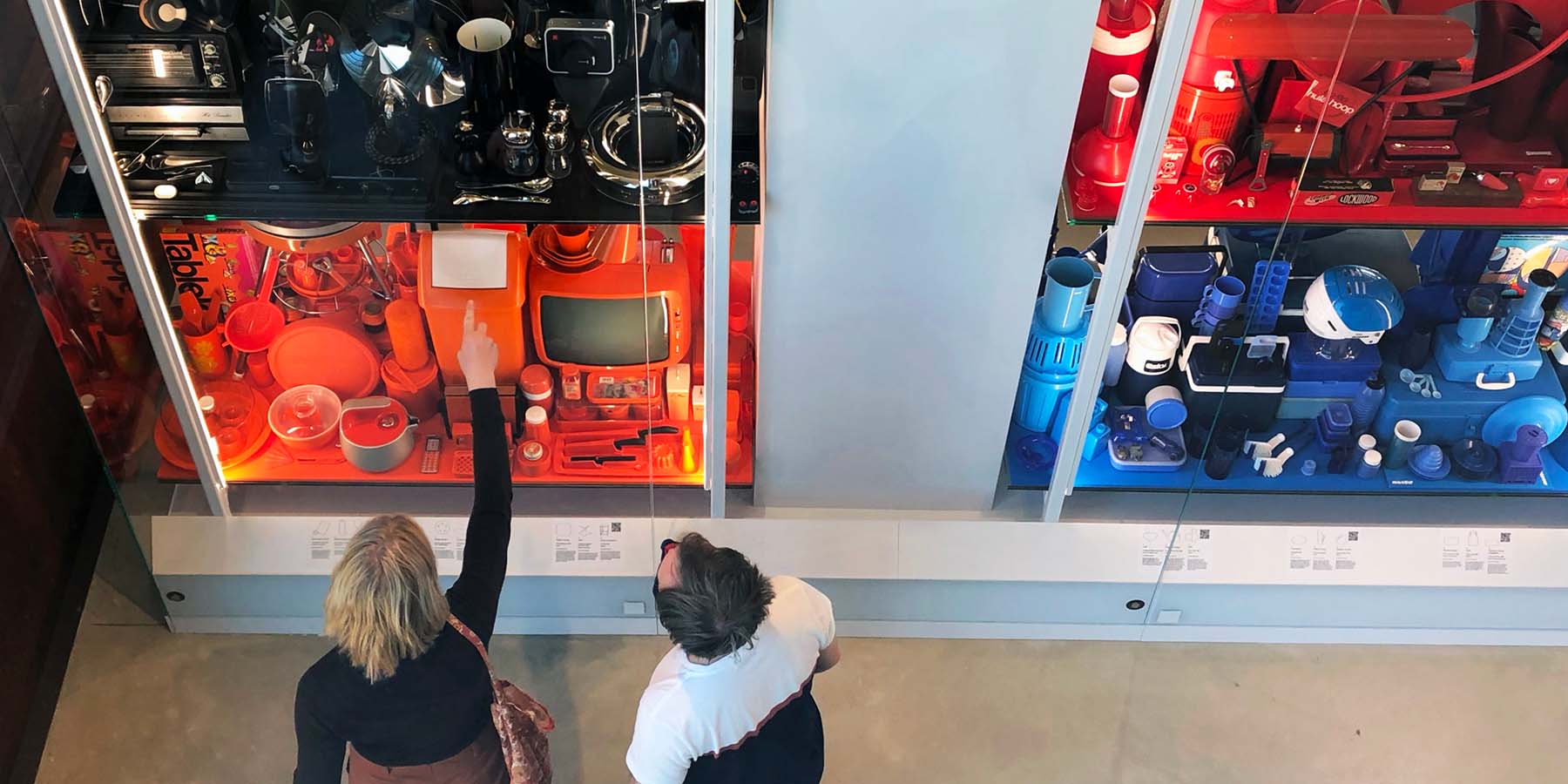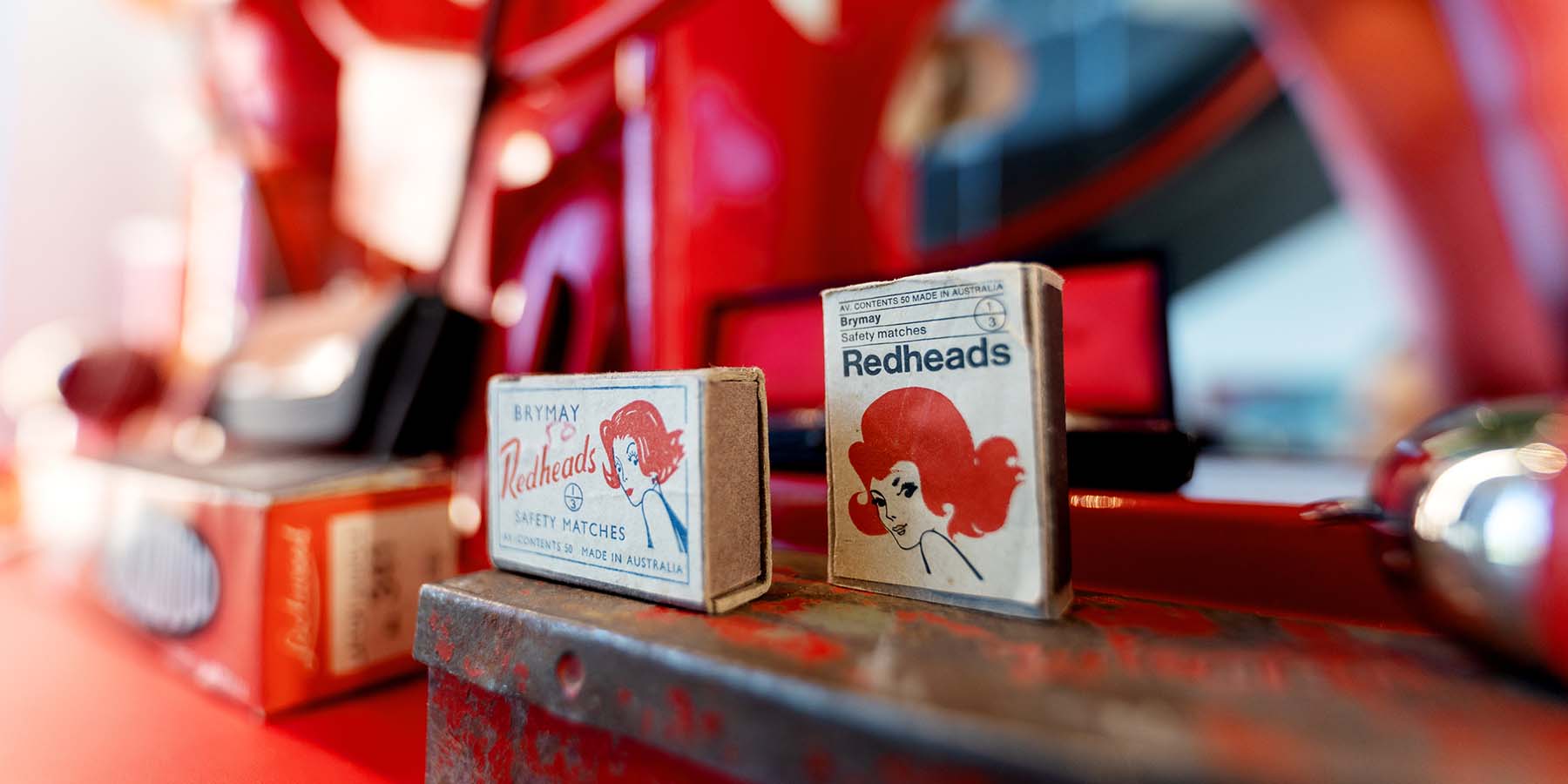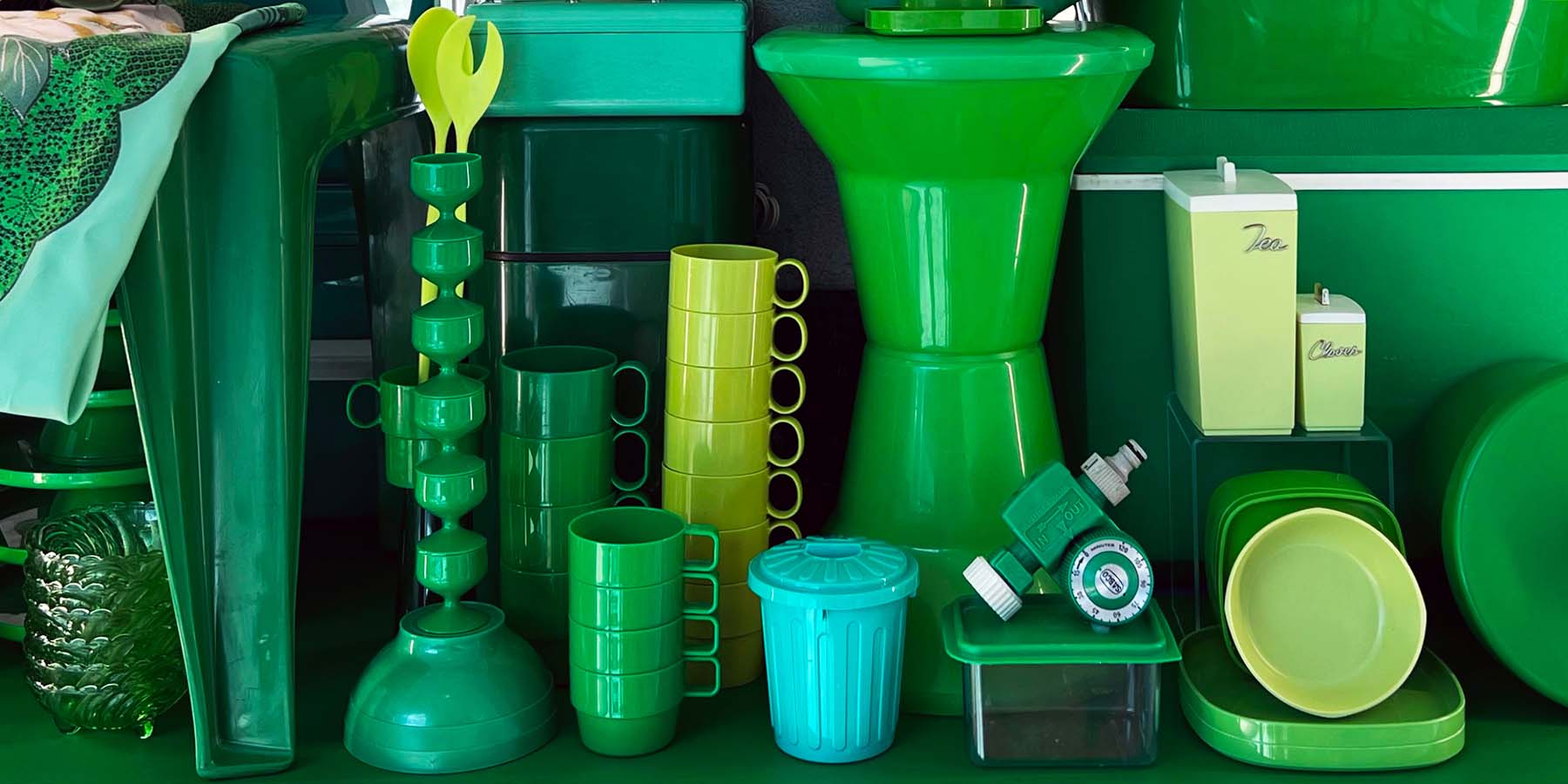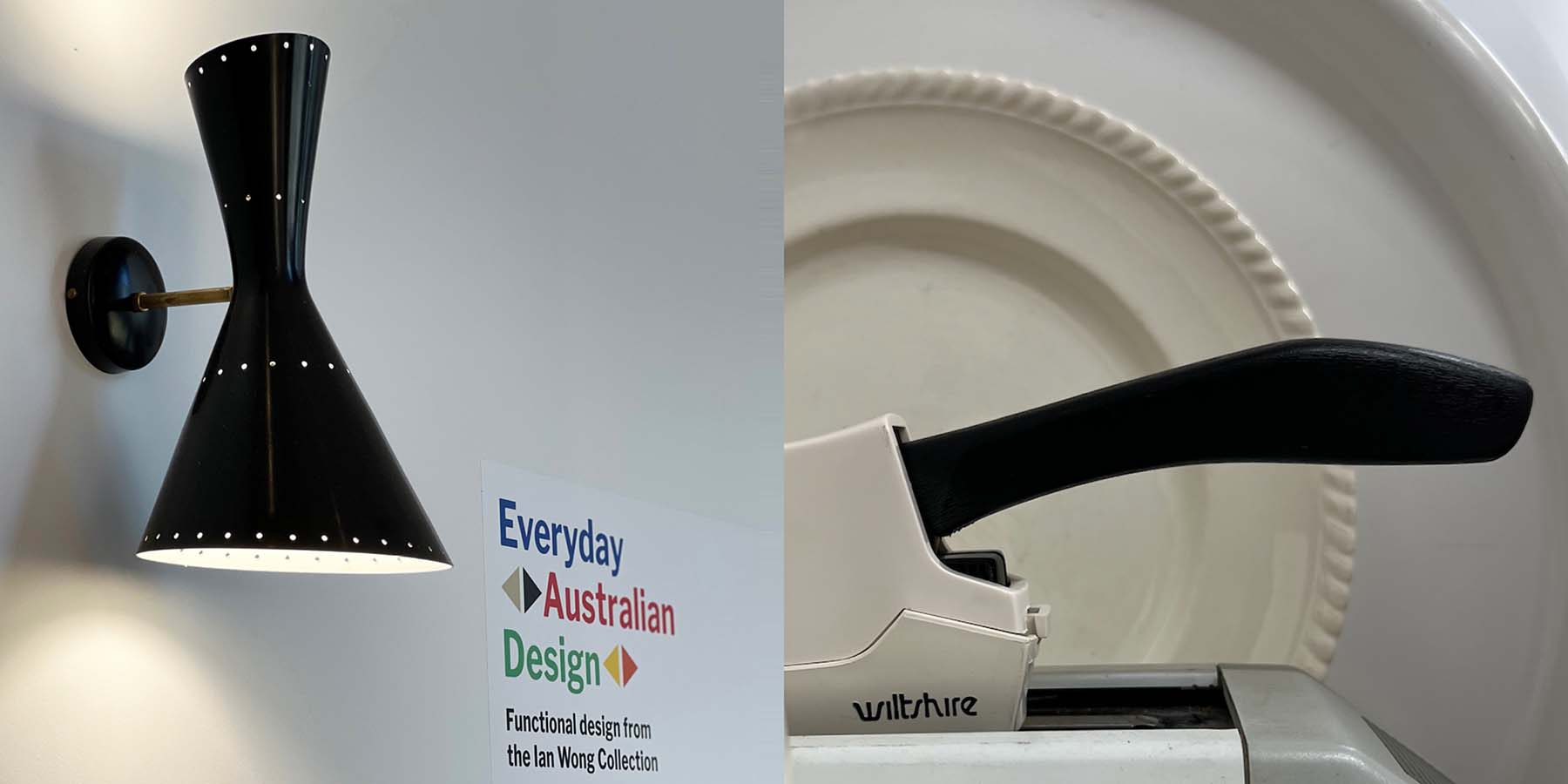Preliminary concepts were developed around connections to Shepparton, Lake Victoria and Australian manufacturing and lifestyle. It was vital that the final installation was accessible and engaging to a cross generational audience. Complex narratives about innovation or manufacturing processes, connections to lifestyle and chronological object displays were explored but deemed to lack simplicity and a capacity to engage. The design solution of color blocking and mass display evolved as a response to the double sided glass display cases and the impact of color from the many plastic objects in the collection. Stored in Shepparton it was possible to deploy a process of one to one prototyping with the objects from the collection.
This design process allowed for solutions to the functional design constraints of how objects would be secured and presented to the viewer as well as exploring color blending and clusters that delivered visual impact. Proportion, scale, orientation, and the precise and considered visual relationships between each objects form were refined as each set of objects were finalised. Curatorial decisions on inclusion of an individual designers work or examples of objects across a historical timeline were balanced with exhibition design decisions on sets of one object or multiples of one object across the range of colors. Prior to installation all color sets were tested for viewing angles, ease of installation and structural stability. The design process ensured a very efficient install time into the single sided glass cases.. Only 16 hrs was required to install over 850 objects in nine color sets and up to 4m above the floor.

